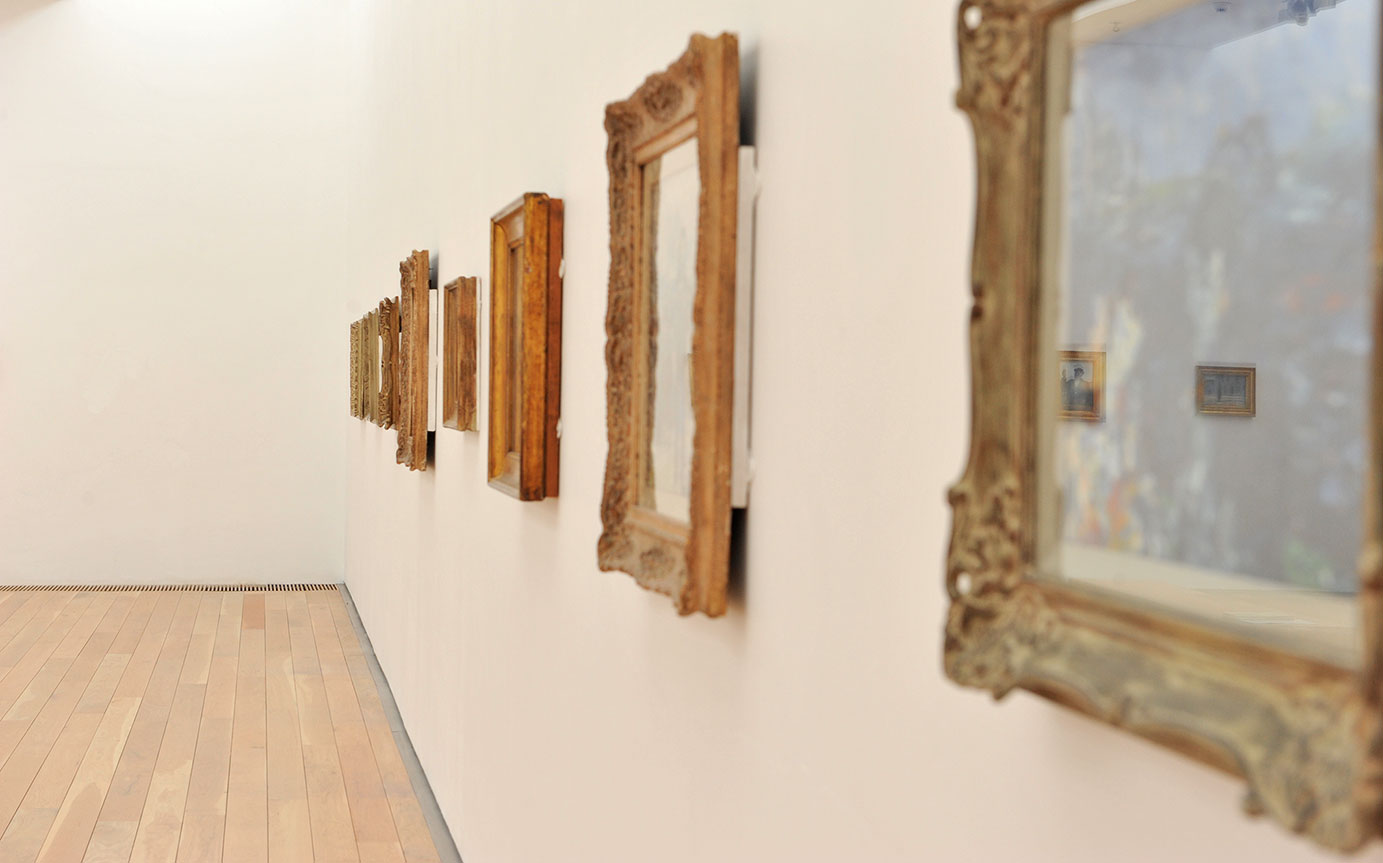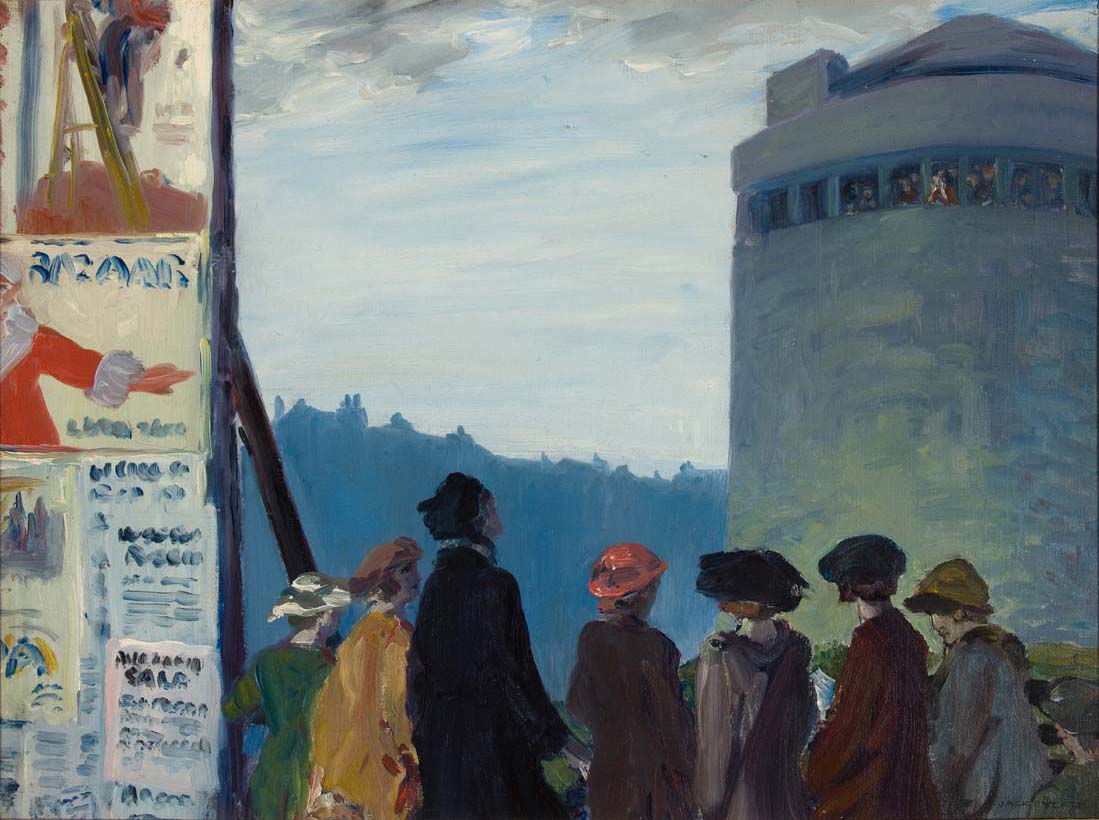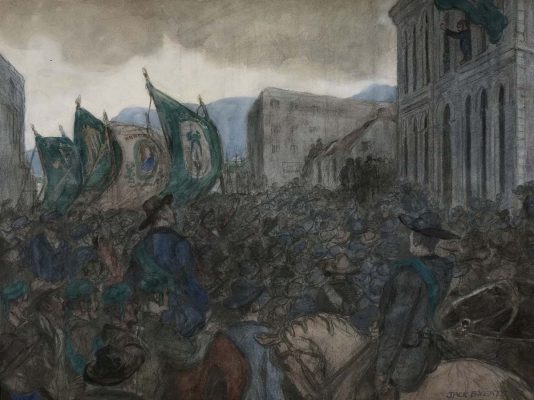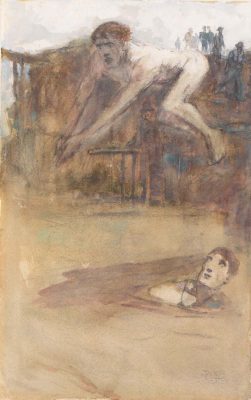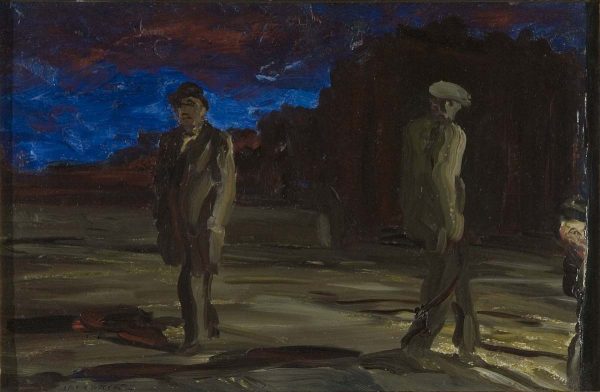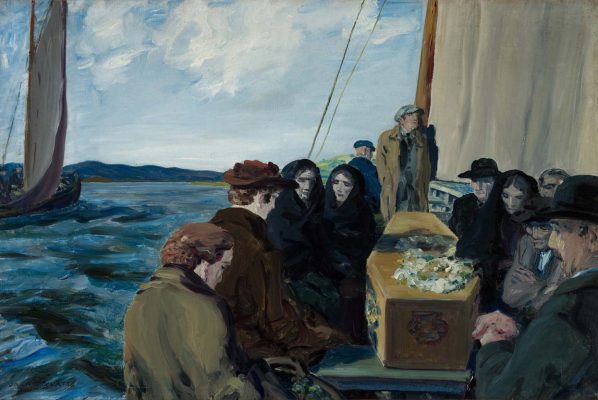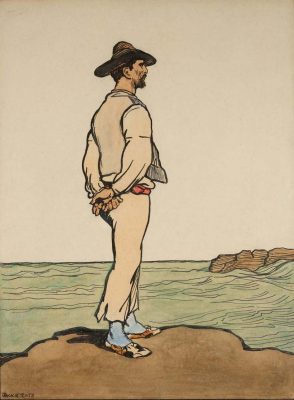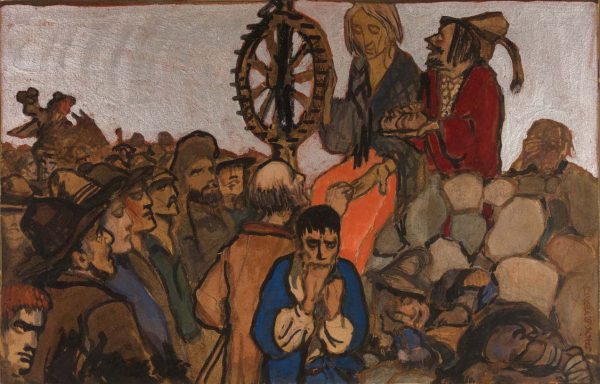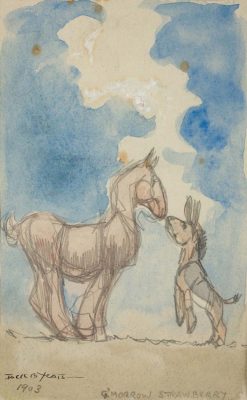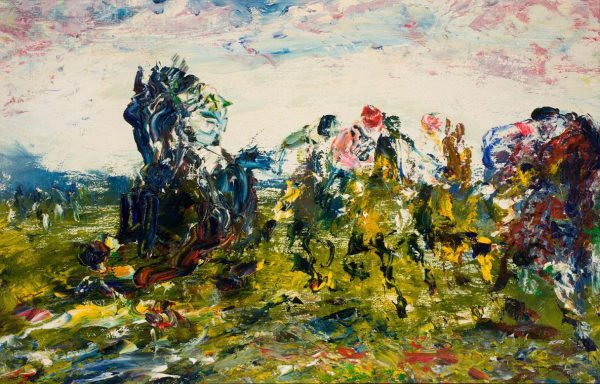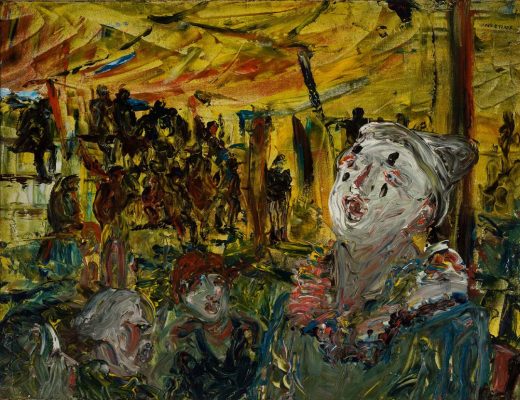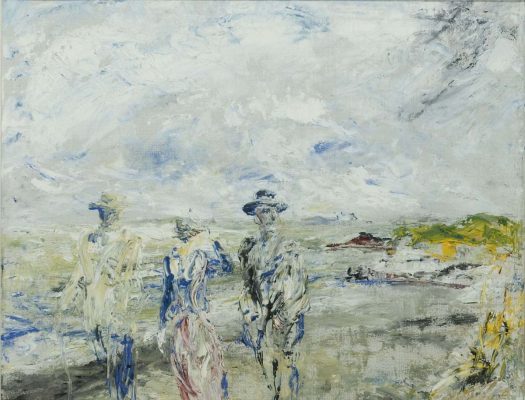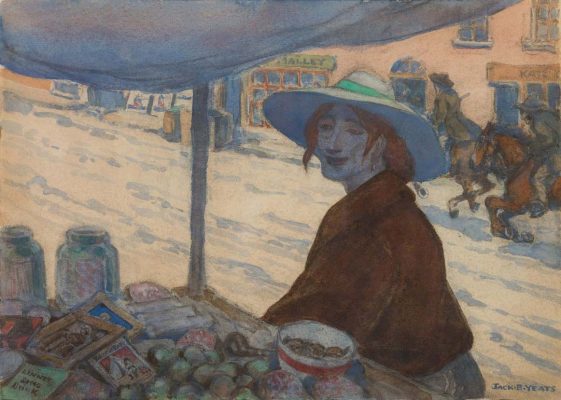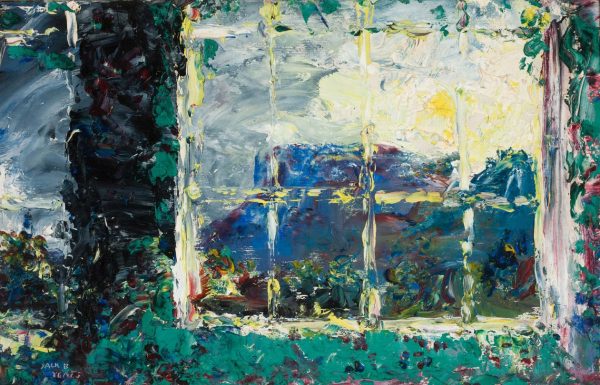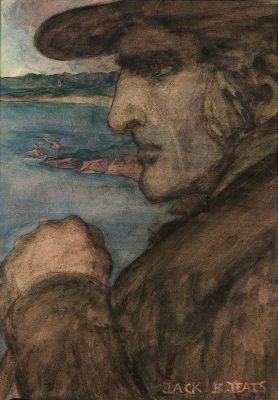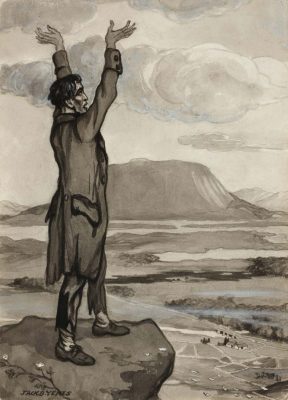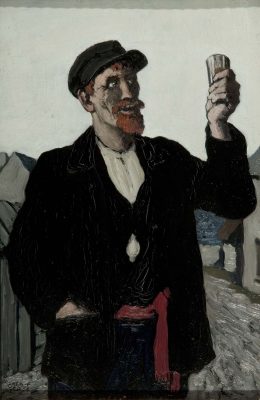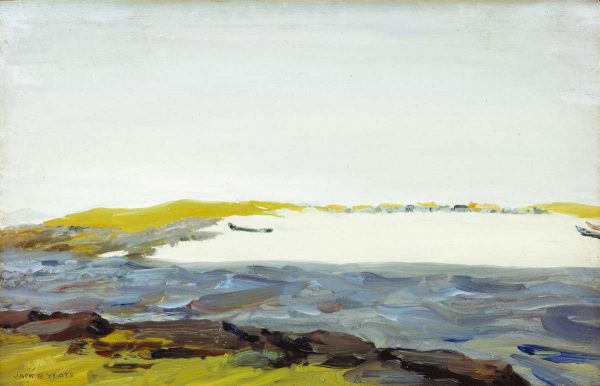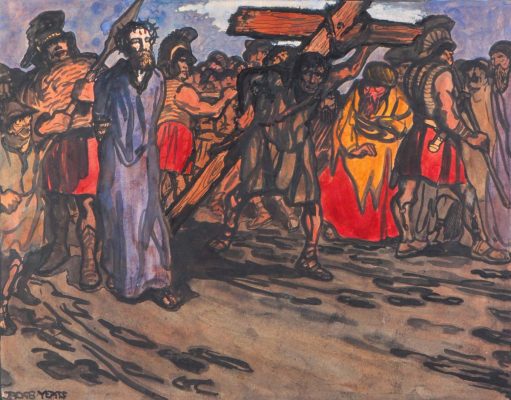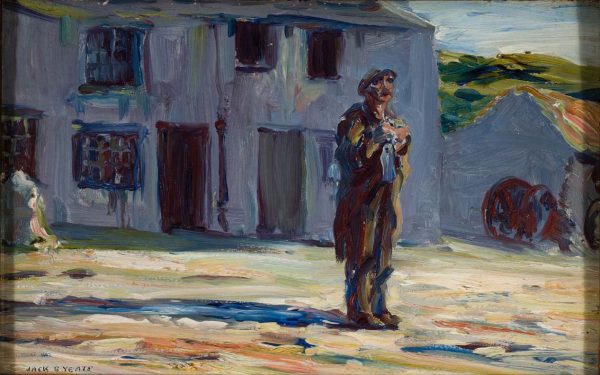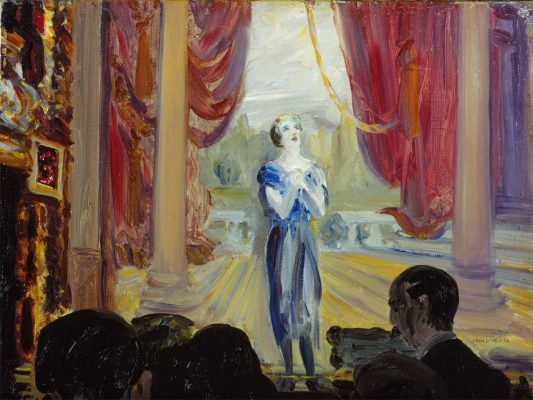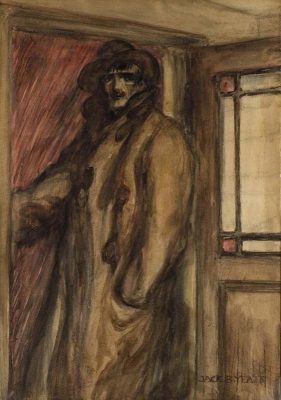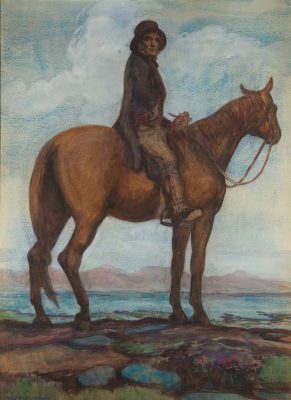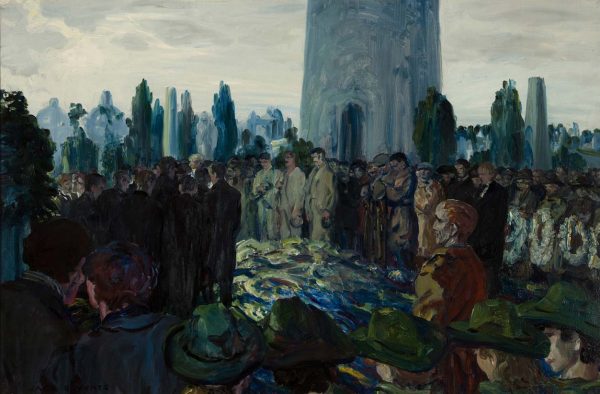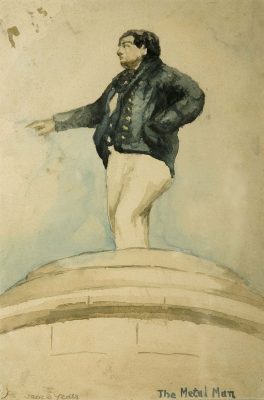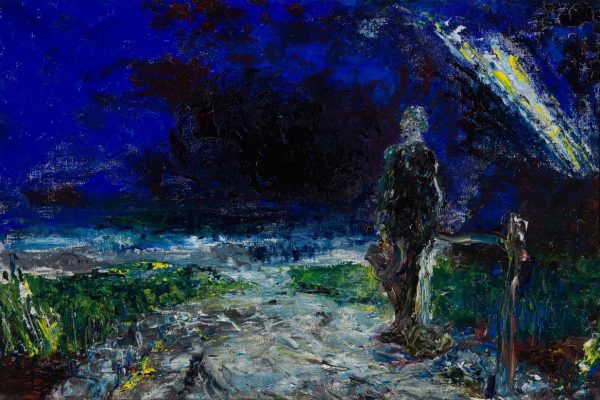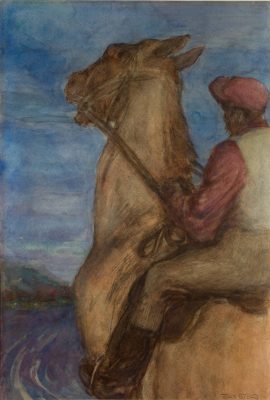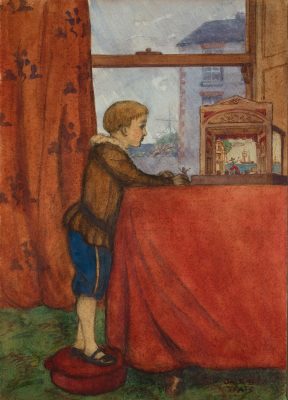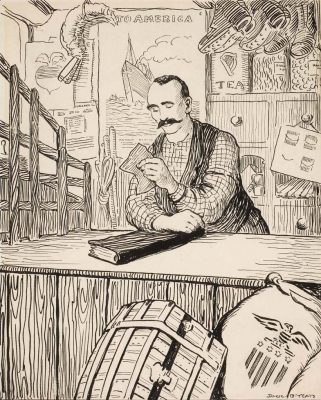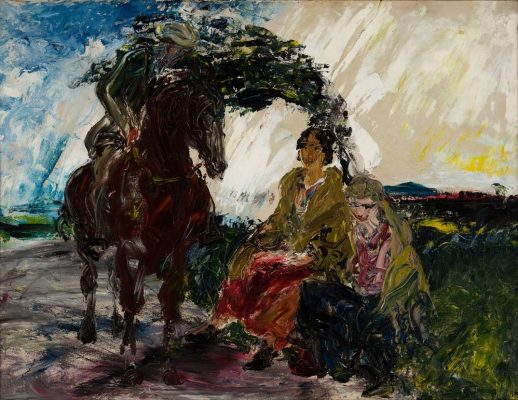Date: c. 1924
Dimensions: 59 × 44cm
Medium: Oil on canvas
Collection: Niland Collection
Provenance: Purchased by public subscription from the Capuchin Annual in 1962
Description:
This is one of Yeats’s most important depictions of life in Dublin in the early years of the Free State. A group of women call up to republican prisoners incarcerated in Kilmainham Jail. The latter, also women, have been interned by the Free State government for their involvement in the Civil War. They have broken the windows of the jail, through which one figure can be seen leaning out, to shout messages to their friends below. Yeats juxtaposes the sombre tower of the jail with a brightly coloured hoarding on which advertisements for bazaars and entertainments are pasted.
These contrasting forms convey the conflicting experiences of communication in Ireland in this period, one of censorship and control, the other of opportunity and apparent freedom of choice. The line of standing women makes a visual connection between the two horizontal elements of the tower and the hoarding. Their proximity to the posters and the variety of the women’s attire show that they are part of modern Ireland but their frustrated attempts to converse with the prisoners contradicts any notion of freedom. Hilary Pyle thinks that the work may have been painted from a photograph (1). It uses a stark composition in which the undulating outline of the women is mirrored by the blue silhouette of the houses in the distance behind them.
(1) Hilary Pyle, Jack B. Yeats. A Catalogue Raisonné of the Oil Paintings, London, 1992, I, no, 246, p.221.
Written by Roisin Kennedy
Poster available here
Born 1871, London, United Kingdom.
Died 1957, Dublin, Ireland.
Jack B. Yeats was the youngest son of the portrait painter John Butler Yeats and the brother of the writer William Butler Yeats. Though he was born in London, Jack spent most of his childhood in Sligo in the care of his maternal grandparents. It was a place that influenced him deeply and he later said that every painting he produced “had a thought of Sligo in it”.
Jack studied in London at the South Kensington School of Art and later at the Westminster School of Art, though he was largely self-taught and had his own distinct style from the beginning. While still at school he was working as an illustrator and contributing to various publications such as Paddock Life, the Daily Graphic and the Vegetarian.
His early work, mostly in watercolour, focuses on the Sligo of his boyhood. These works display his emerging interest in the people and places of every day life- the market day, the sailor, and the races. In 1894 he married his fellow art student Mary Cottenham White, and they settled in England. He held his first solo show in London in 1897 and shortly afterwards he began to focus solely on Irish subject matter. In 1910 he returned to live in Ireland. The same year he began to contribute illustrations to the satirical publication Punch under the pseudonym W. Bird, and over the next 30 years he supplied the magazine with over five hundred drawings.
In 1905 Yeats toured Connemara with the writer John M Synge who had been commissioned to write a series of articles for the Manchester Guardian on life in the west of Ireland. This trip, coupled with his upbringing in Sligo, made an indelible impression on the artist. His wide-ranging interest in all of humanity led him to depict subjects ranging from street scenes, to boxing matches, the races, and funerals.
In 1910 he returned to Ireland and settled first in Bray and later in Dublin. He became an associate member of the
in 1915 and a full member the following year. He was a founder member of the Society of Dublin Painters in 1920, and in 1922 he participated in the Exposition d’Art Irlandais in Paris. He won the silver and the bronze medals at the
e Olympiade in Paris in 1924 for the painting The Liffey Swim.
Yeats’ early paintings were in watercolour and he was over thirty by the time he began to work regularly in oils. For years his style remained essentially conservative, but in the mid-1920s a profound change began to take place. Yeats’s handling grew much freer, his forms were defined by brushstrokes rather than by line, his colours grew richer and more luminous and his earlier realism gradually gave way to a moody, intimate and highly personal romanticism. These tendencies grew even more marked over the next two decades, until in his final years when his subject-matter is sometimes buried and almost obliterated by rich impasto, bravura brushwork and flame-like areas of colour.
He exhibited widely in Dublin and London, and in 1932 held solo shows at the Ferragail Galleries and the Barbizon Museum of Irish Art, New York. He first showed with Victor Waddington Galleries, Dublin in 1943, and continued to exhibit there until his death. A major retrospective of his work opened at the Tate Gallery, London in 1948. Jack B Yeats died in Dublin on March 28 1957.

